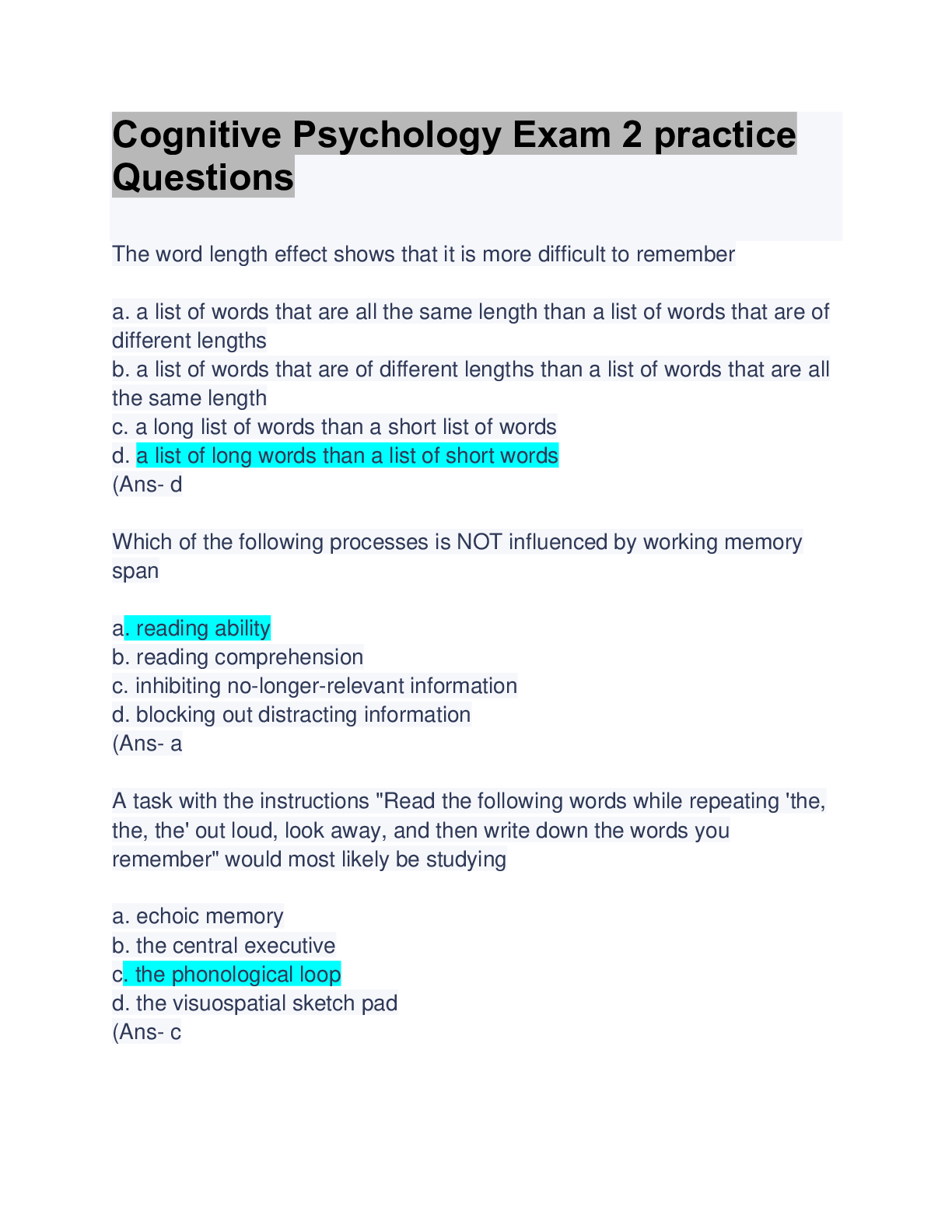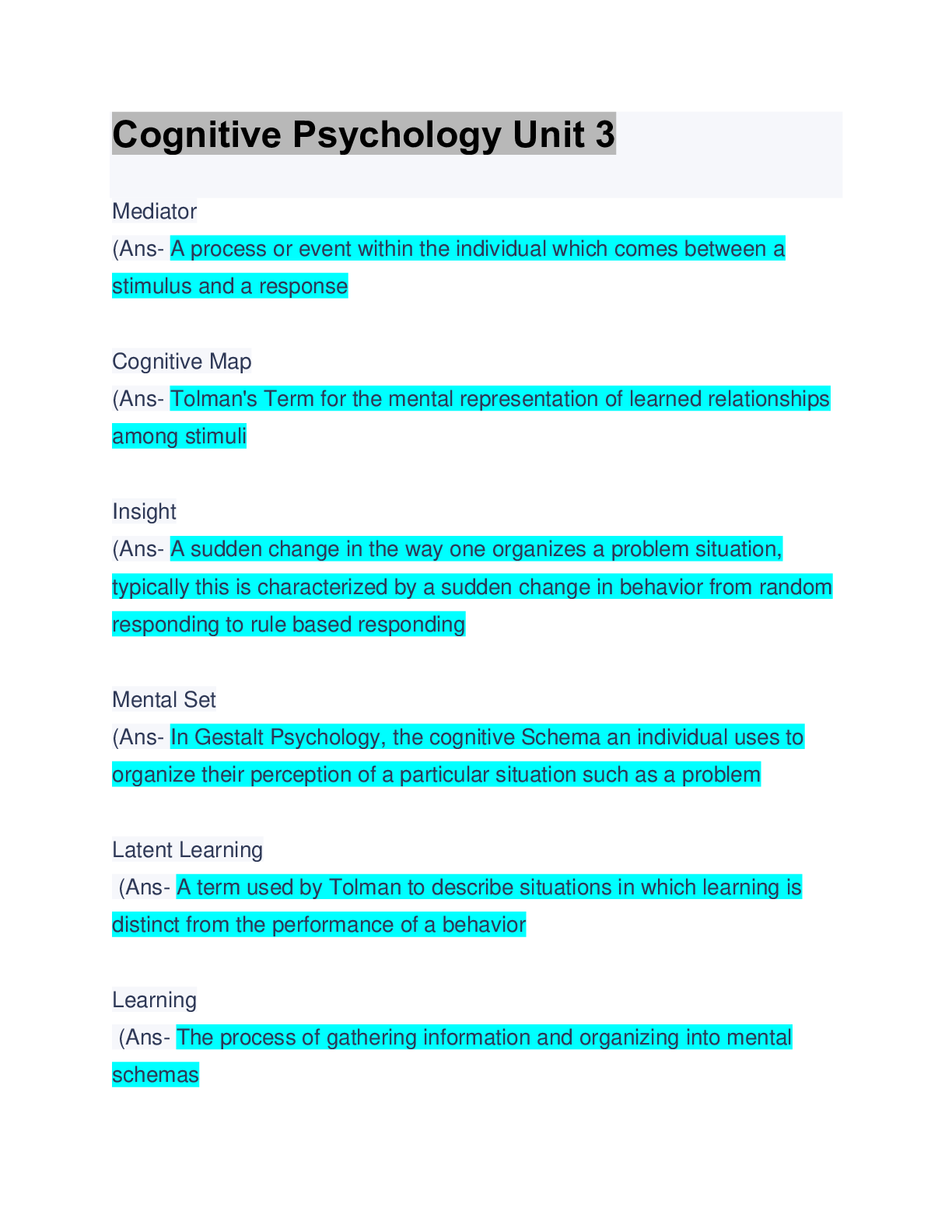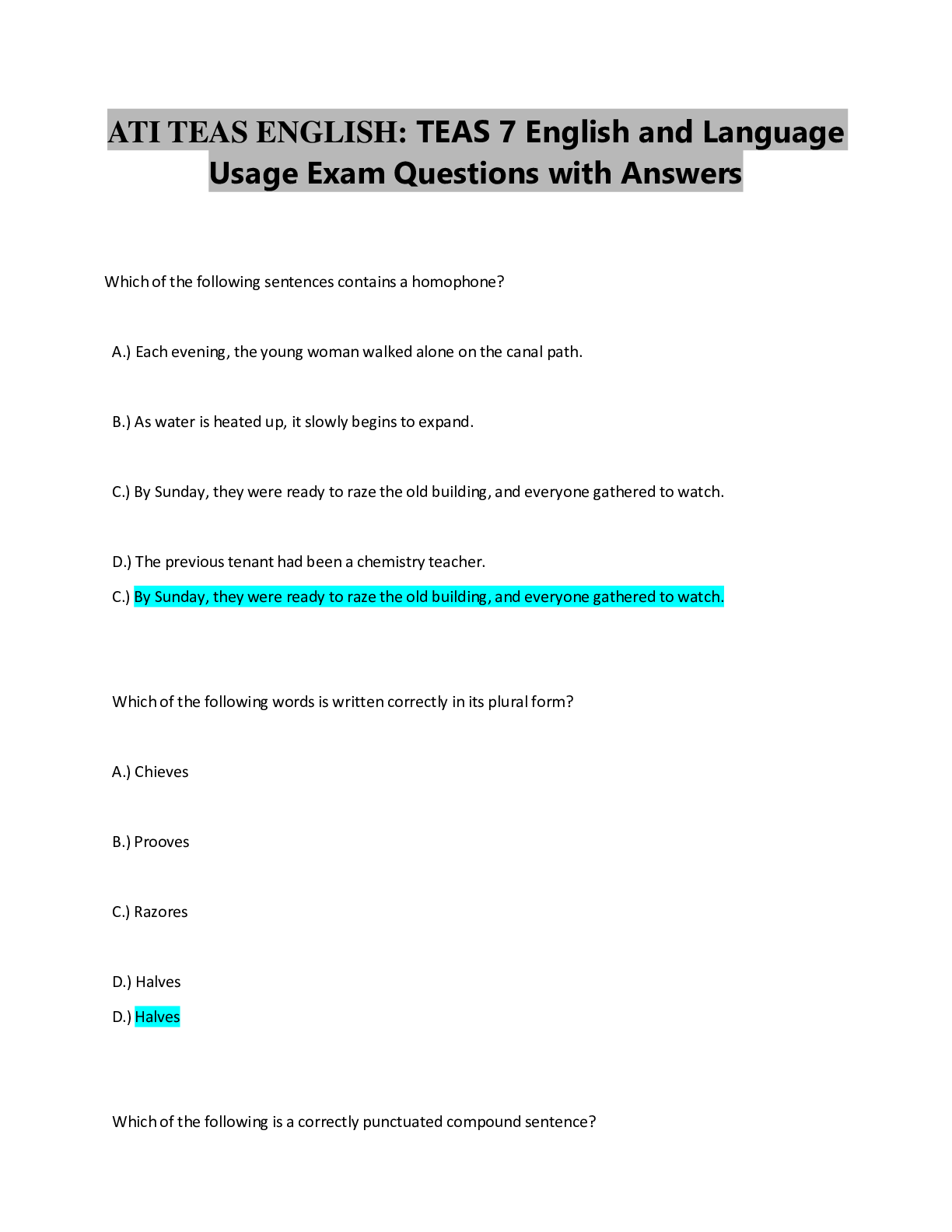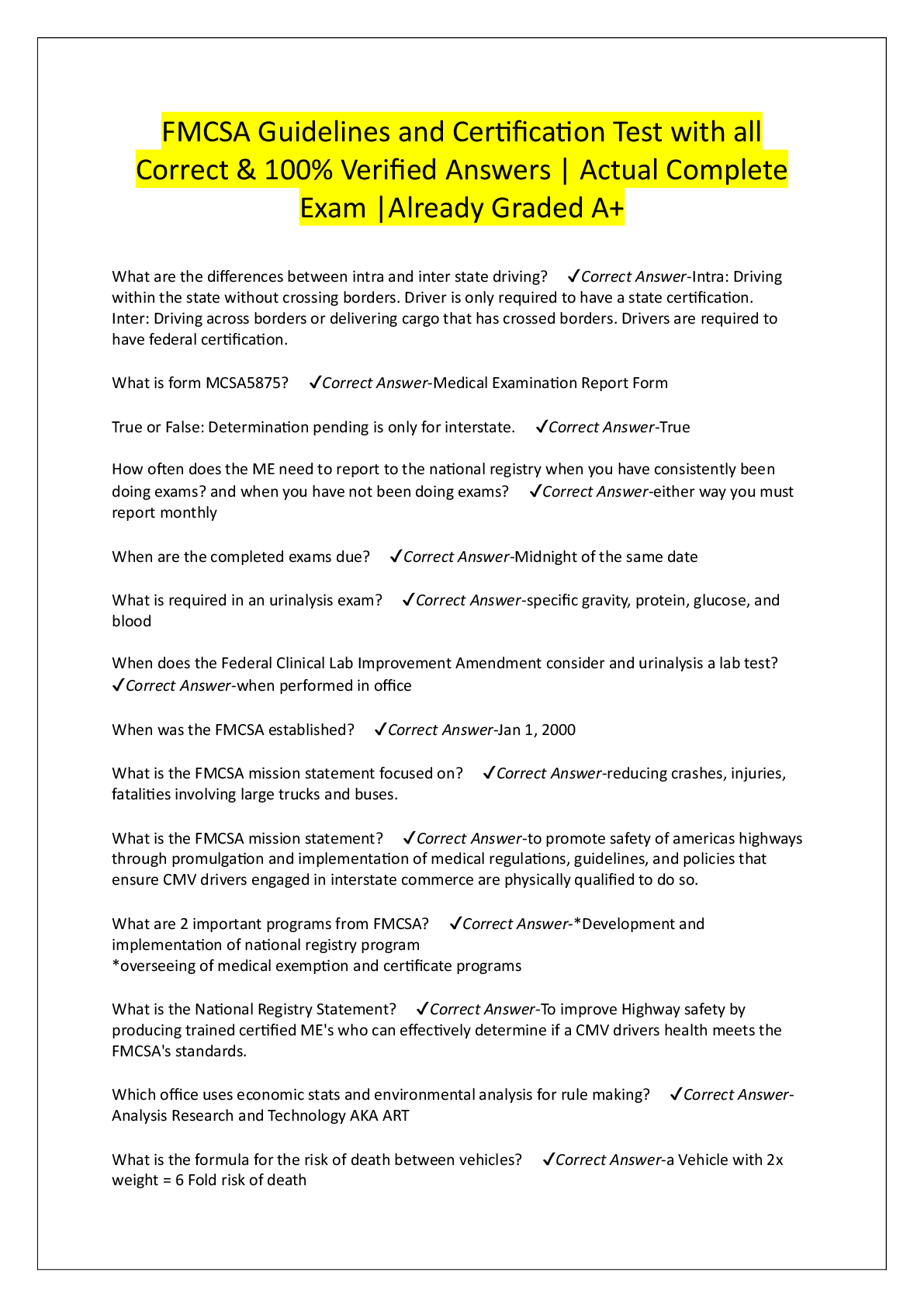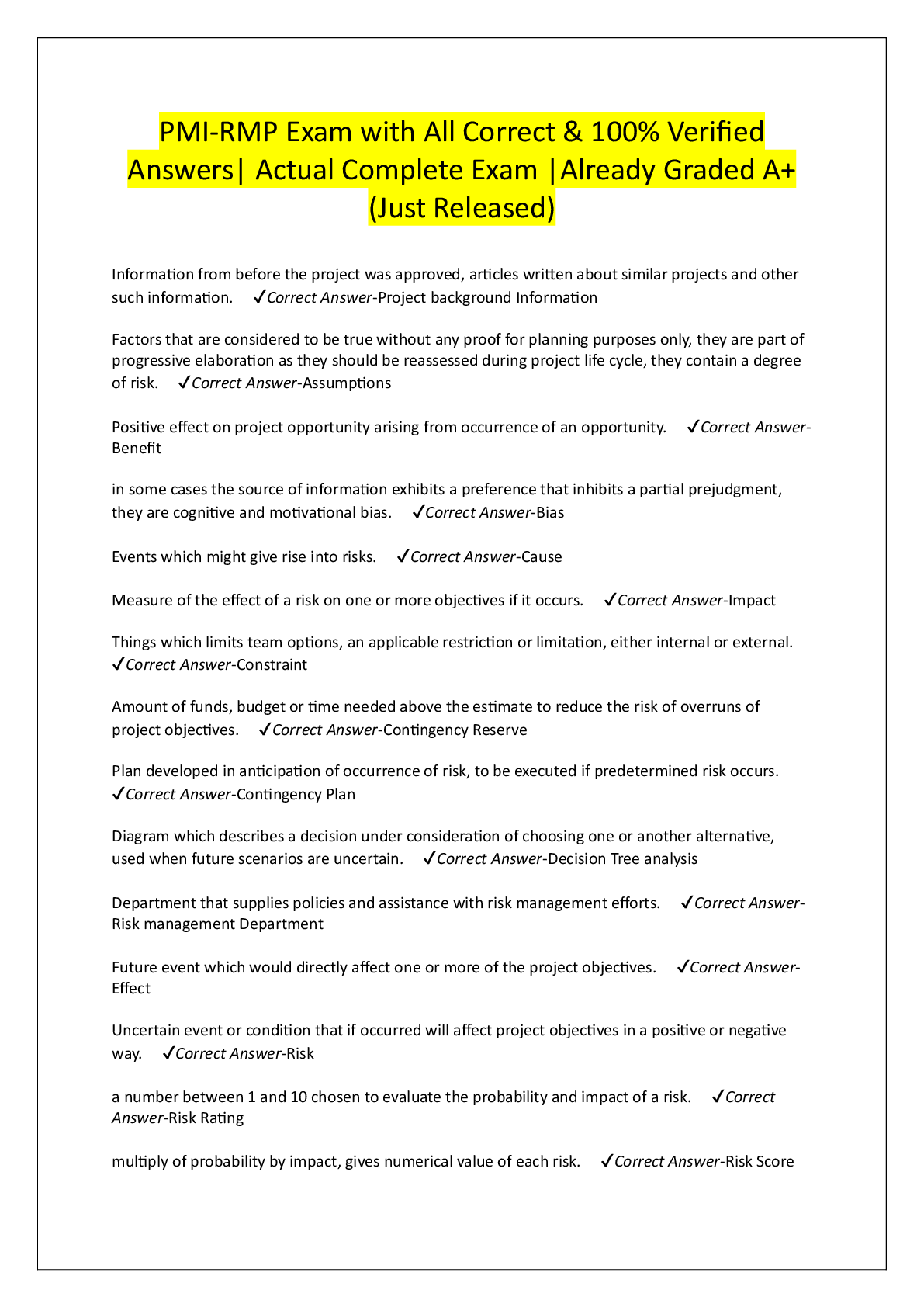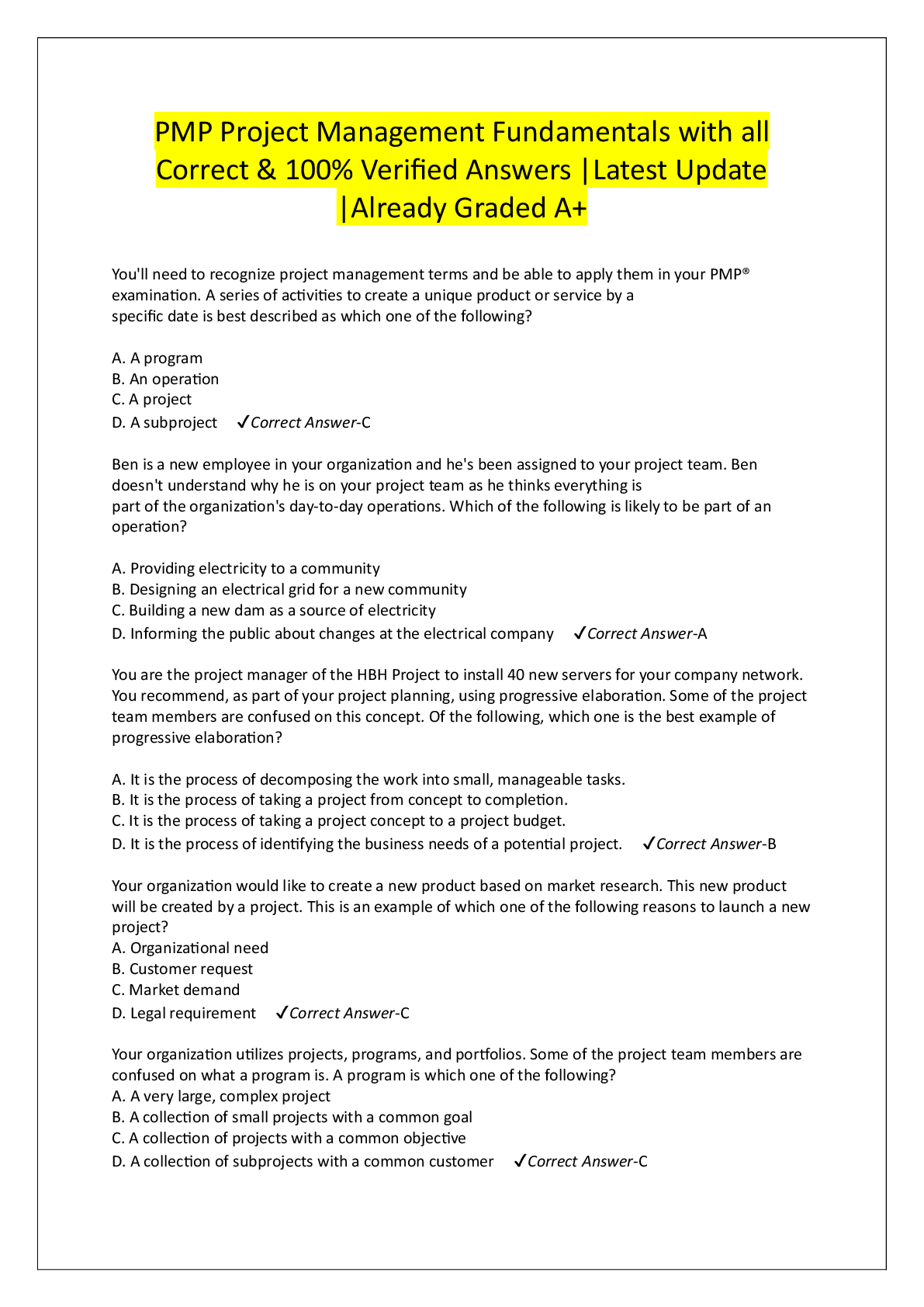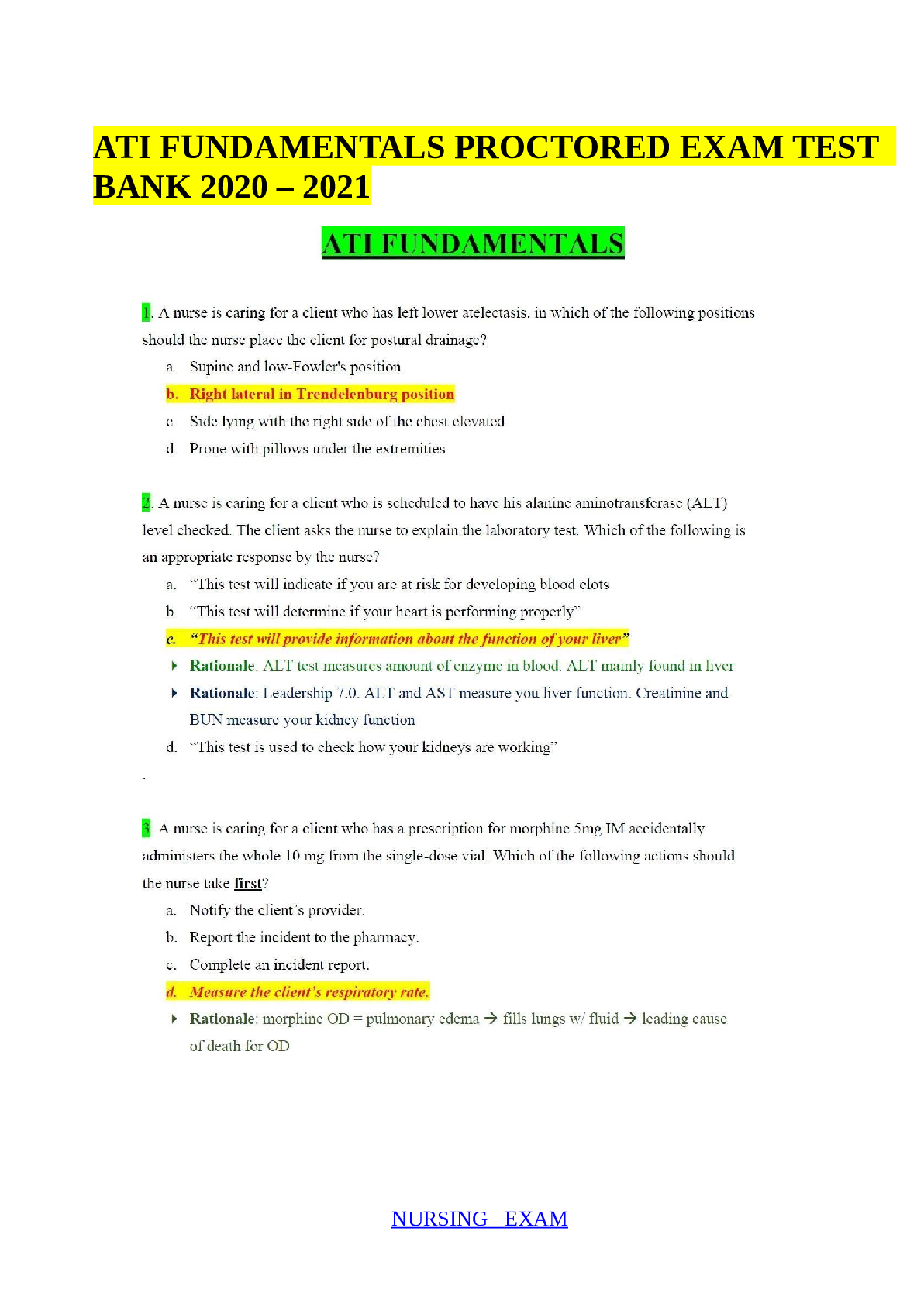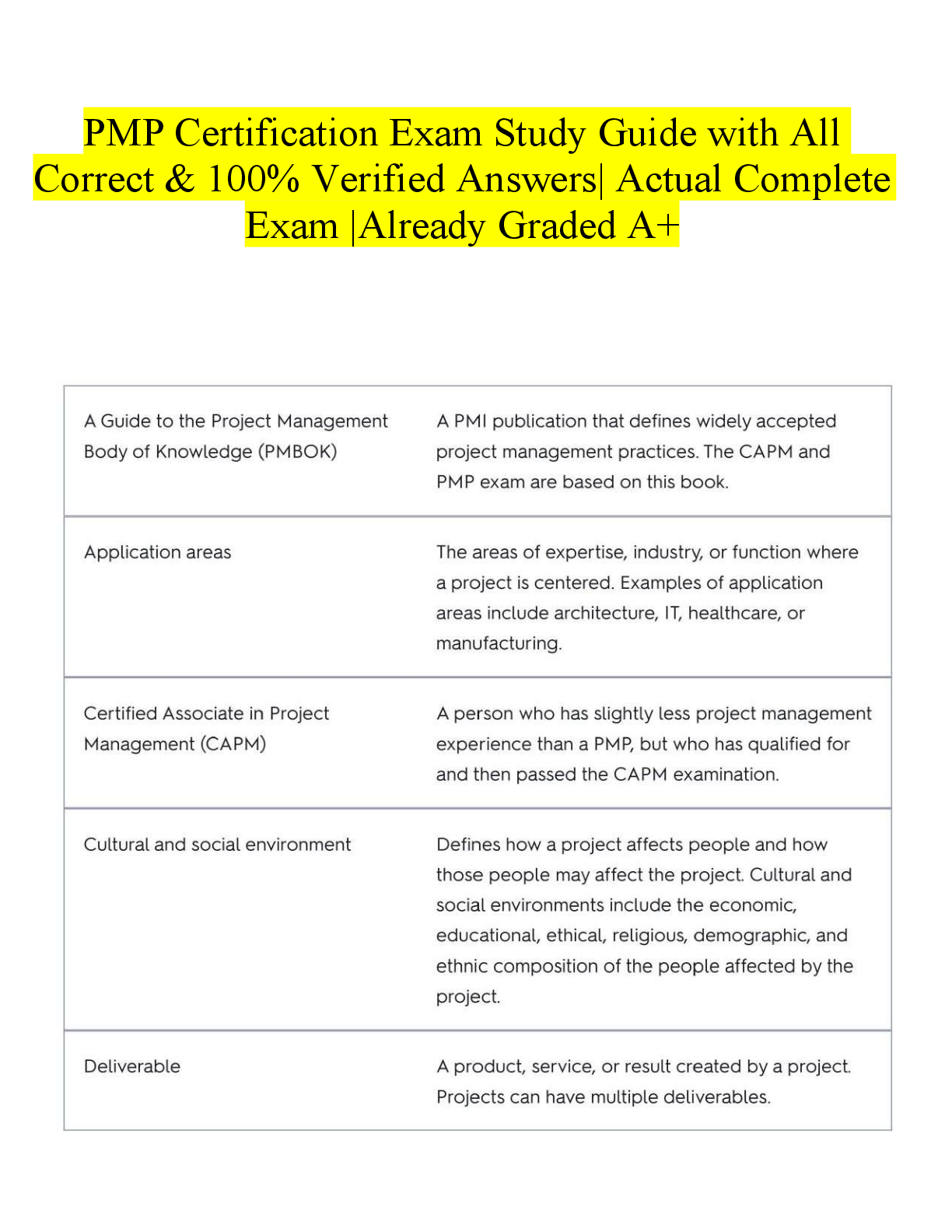Health Care > EXAM > TMC EXAM 2:Questions & Answers: Guaranteed A+ Score: Latest Updated (All)
TMC EXAM 2:Questions & Answers: Guaranteed A+ Score: Latest Updated
Document Content and Description Below
A patient with CHF has the following input/output history Yesterday Today IN 1900 mL 2100 mL OUT 1000 mL 1100 mL Which of the following clinical findings is most likely to be observed? A. bron ... chial wheezing B. friction rub C. decreased egophony D. moist crepitant (- The correct answer is : D Explanation : This CHF patient is obviously retaining fluid because he is receiving more fluid in that he is putting out. The clinical finding most associated with fluid retention is moist crepitant rales. Fine rales are associated with atelectasis but moist rales is associated with fluid retention, especially congestive heart failure (CHF). An infant born 24 hours prior is experiencing frequent periods of apnea lasting more than 60 seconds. Which of the following medications would be helpful in stimulating the infant's respiratory drive? A. Aminophylline B. Fluticasone C. hormone D. Exosurf (- The correct answer is : A Explanation : An infant who experiences apnea periods greater than 60 seconds may need respiratory stimulation. This may be accomplished by administering the medication Aminophylline. Aminophlylline is only intended for ventilatory stimulation in infants. The same medication is used for long-term bronchodilation in adults. A respiratory therapist is having difficulty advancing a suction catheter down a fenestrated tracheostomy tube while the inner cannula is removed. The cannula appears to meet resistance within a few inches from insertion. The therapist should A. remove the tracheostomy tube B. twist the catheter while attempting to advance C. inflate the cuff D. obtain a smaller suction catheter (- The correct answer is : B Explanation : When suctioning somebody with a fenestrated tracheostomy tube, it must be remembered that the suction catheters can sometimes get stuck on the fenestration hole inside the tube. The best remedy for this is to twist the suction catheter until the end is clear of the hole. The following flow volume loop (loop is tall and skinny) is obtained from a 62-year-old factory worker. Which of the following could represent the patient's diagnosis? A. pulmonary fibrosis B. emphysema C. cystic fibrosis D. chronic bronchitis (- The correct answer is : A Explanation : The flow volume loop is tall and skinny, indicating normal flows but abnormal volumes. This is consistent with a restrictive lung defect. The best answer is the disease that is restrictive in nature. In this case, only pulmonary fibrosis qualifies. Which of the following should be monitored for a ventilator-dependent newborn with IRDS? A. gas distribution (SBN2) in the lungs B. urine specific gravity C. pH D. fluid input and output (- The correct answer is : D Explanation : All choices are indicated while monitoring a critically ill neonate receiving mechanical ventilation. I & O fluid monitoring is essential. Managing acid-base balance and the artificial airway are also essential. Which of the following is an important element of instruction to a home care patient who will be receiving continuous oxygen therapy at 2 L/min by nasal cannula? A. check oxygen concentrator flow rate once a week B. run a flow calibration check once monthly C. do not change flow rate without a physician order D. increase flow rate during exercise (- The correct answer is : C Explanation : When instructing a home care patient on the use of their oxygen concentrator, and using oxygen in general, the respiratory therapist must include those things that are appropriate for the patient. In this question no open flames, use of grounded plugs only, and a restriction on changing the flow rate without a physician order are appropriate instructions. It is inappropriate to ask the patient to check or calibrate the concentrator's flow rate once a week. This sort of maintenance should be done by a respiratory therapist. Which of the following parameters is NOT consistent with weaning from mechanical ventilation? A. A-aDO2 of 320 mmHg B. VT to 500 mL C. VD/VT of 0.50 D. RSBI of 86 The correct answer is : A Explanation : In order to wean from a ventilator, the patient's dead space-tidal volume ratio must be below 60% or .60. The rapid shallow breathing index must be below 106. Spontaneous tidal volume must be greater than 5 mL per kilogram. The alveoli-arterial oxygen difference (A-a gradient) must be less than 300 mmHg. In this case, the dead space-tidal volume ratio is too high and the alveoli-arterial oxygen difference is too wide. These are the two criteria that indicate the patient is not ready to wean from the ventilator. A respiratory therapist is alerted by a low-volume ventilator alarm on a patient who has a chest tube drainage system in place. Set tidal volume is 600 mL while return tidal volume is 190 mL. The therapist should FIRST A. increase tidal volume to compensate B. insert an additional chest tube C. clamp the chest tube near the patient D. disconnect the chest tube from wall suction pressure The correct answer is : C Explanation : A patient who is receiving mechanical ventilation, and has a chest tube drainage system in place, must be monitored carefully for lost volume through the lung through the chest tube drainage system. The clinical evidence of this is found in the return tidal volumes. If the volume administered is far greater than the return volume, volume must be being lost in the system somewhere. A loss of volume may be noticed by the excessive bubbling in the water seal compartment. To determine how it is being lost, the first step would be to clamp the chest tube near the patient. If bubbling in the water seal compartment stops, the volume being lost is most likely coming from a perforation in the lung. The patient requires surgery to repair this. While performing routine oxygen rounds, the respiratory therapist notes a COPD patient who is receiving supplemental oxygen at 2 L/min is markedly cyanotic and has a heart rate of 30/min. The therapist should FIRST A. switch to FIO2 1.0 B. increase flow to 4 L/min by nasal cannula C. obtain an arterial blood gas D. go get help (- The correct answer is : A Explanation : Even though a COPD patient should rarely receive more than 2 L/min oxygen, there are emergency circumstances that would dictate more supplemental oxygen. The use of the word "markedly" is an indication of an emergency. In this case the patient is markedly cyanotic and therefore has an oxygenation emergency. Switching to 100% oxygen is appropriate. A respiratory therapist notices the cuff pressure on an endotracheal tube is 10 cm H2O. After introducing 10.0 mL of air, the cuff pressure is 5 cm H2O. The patient is receiving positive pressure ventilation. The therapist should recommend A. replacing the ET tube B. clamping the pilot tube C. monitoring the patient D. initiating high frequency jet ventilation (- The correct answer is : A [Show More]
Last updated: 3 years ago
Preview 1 out of 67 pages

Buy this document to get the full access instantly
Instant Download Access after purchase
Buy NowInstant download
We Accept:

Also available in bundle (1)
Click Below to Access Bundle(s)

TMC Practice Exam A:TMC Practice Exam B Kettering:TMC practice Questions;TMC Practice Exam ( State Board Exam) :TMC State Board Practice Exam:NBRC Mock TMC Exam Review:C&S TMC Exam 1-6: Latest Updated A Score Solutions
TMC Practice Exam A:TMC Practice Exam B Kettering:TMC practice Questions;TMC Practice Exam ( State Board Exam) :TMC State Board Practice Exam:NBRC Mock TMC Exam Review:C&S TMC Exam 1-6: Latest Updated...
By Ace-It 3 years ago
$27.5
13
Reviews( 0 )
$8.00
Can't find what you want? Try our AI powered Search
Document information
Connected school, study & course
About the document
Uploaded On
Dec 08, 2022
Number of pages
67
Written in
All
Additional information
This document has been written for:
Uploaded
Dec 08, 2022
Downloads
0
Views
99


